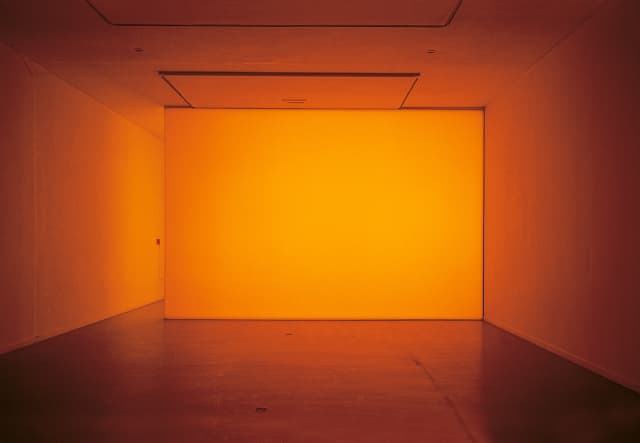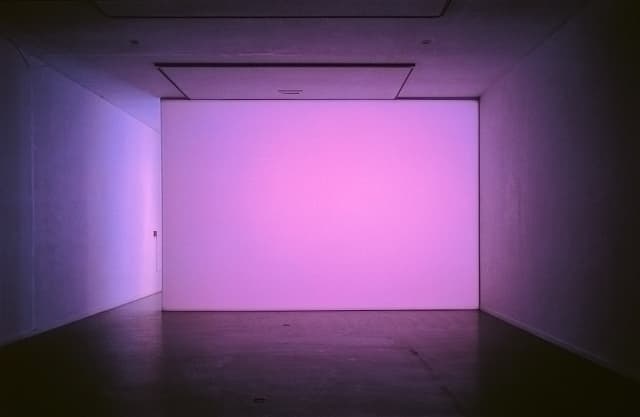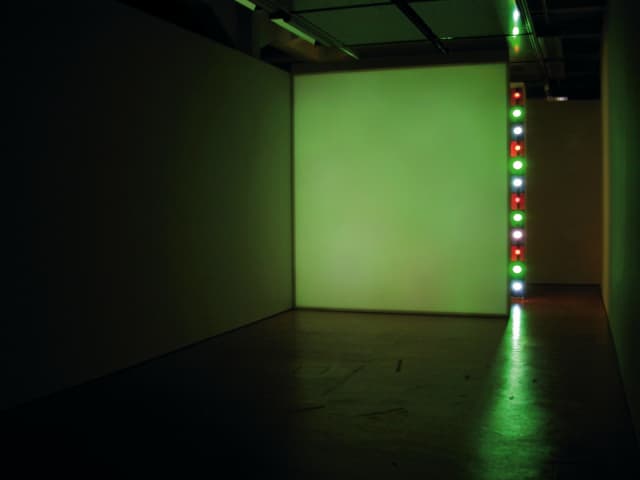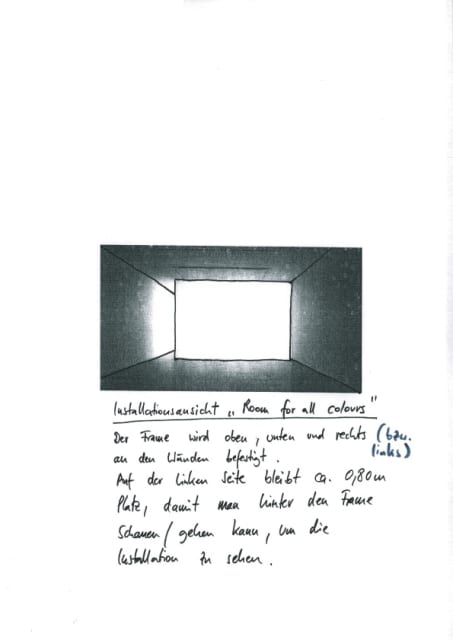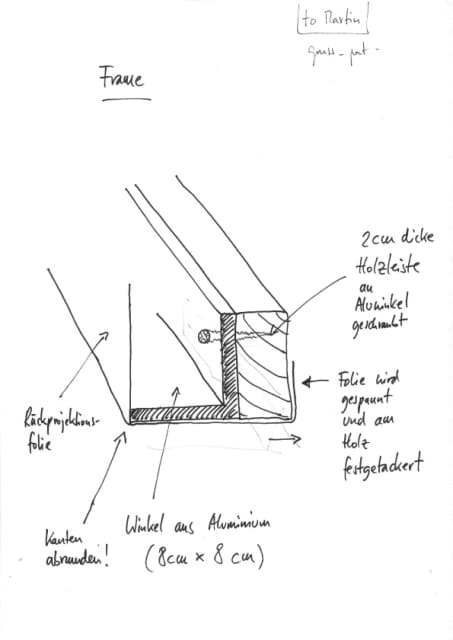A projection screen divides a room from floor to ceiling. Behind it, a matrix of red, green, and blue filter foils is lit by a grid of white lights mounted to a wall. By adjusting the intensity of the light behind the filters and diffusing it through the projection screen, the work can produce any colour, presenting visitors with one homogeneous hue. The colours change according to a pre-programmed sequence, and the white lights and filters intrinsic to the work’s mechanics are visible to visitors as they enter and leave the space.
The work explores the way that colour is ‘produced’ by the manipulation of visual phenomena within an environment. In this case, the set-up employs the additive colour model, adding combinations of red, green, and blue together in order to produce the full gamut of tints and hues. Viewers are reminded not only that our experience of colour is closely related to our experience of light, but also that it is influenced by cultural habitat and physical environment.
